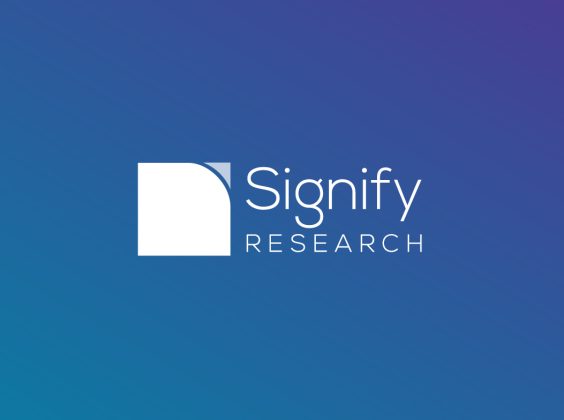
Written by

What a year 2020 has been for AmWell. The rebranding, the $0.3B investment in July, the planned IPO, the $100M investment from Google and it riding the wave of telehealth’s transformation during the COVID-19 pandemic. In late August the company released its pre-IPO Form S-1 Registration Statement providing the first public glimpse of its historic financial performance and insight into how the COVID-19 pandemic has impacted business. Here’s our take on these financials and the impact of the recently announced Google investment.
1) COVID-19 Has Driven Revenue Up 77%
The headline revenue data (summarised below) provides very positive news for AmWell and its new investor, Google. Notably:
- Even prior to COVID-19, the company was growing well with revenues increasing 31% in 2019 compared to 2018.
- This rate of growth has accelerated in 1H20, with overall revenue up 77% on the same period in 2019.
- The 2019 growth was partly driven by a small increase in the number of health plan subscription customers and an increase in the volume of solution modules taken by each. However, more influential was the increase in the number of health systems customers and the increase in “AMG Paid Visit” revenue (i.e. non-subscription customers using the service). Factors that have also contributed to the rapid increase in 1H20.
- We explore this in more detail later, but the growth in health systems revenue highlights a particular success for the company by expanding its customer base beyond its initial payer/employer target customers into the provider space. This has been a key strategy for AmWell in recent years and was a driver in its acquisition of Avizia in 2018. The data suggests the strategy has been largely successful in terms revenue growth
2) Losses Up Too – Real Terms and Proportional to Revenue
A key issue for many of the service providers that have historically targeted low-acuity virtual care markets (AmWell, Teladoc Health, etc.) has been making a profit. Teladoc Health is the largest vendor of this type and is still loss-making several years after its IPO. The financial data from AmWell illustrates that it is in a similar position.
Both companies have aggressively entered higher-acuity telehealth markets via acquisition over recent years to target segments that offer potentially greater margins. However, AmWell’s financial data suggests there is still a long way to go and notably it is moving in the wrong direction. The net loss-to-revenue ratio increased from 46% to 93% between FY 2018 and 1H20.
COVID-19 has in fact made the challenge much tougher as it has been low-acuity (least profitable) markets that have seen the fastest growth since the outbreak of the pandemic. We explore this dynamic in Signify Research’s just published report (Telehealth – World – 2020). Rapid growth is expected to follow in higher-acuity markets in 2021, when low-acuity markets could potentially stagnate, so some reversal in the trend is likely in 2021.
However, the company still has a huge challenge on this front and ultimately the long-term profitability of the low-acuity business models of many in this industry must be questioned. The strategy of targeting higher acuity markets is the right one, but it’s unlikely the low-acuity market can offer a profitable business model for the foreseeable future. The new deal with Google hints at some potential solutions to this (particularly in relation to using AI to field some customer interactions). But for now, scale only seems to be amplifying the profitability issue.
3) Business Mix is Changing – But There are Big Risks
The AmWell financial data provides great insight into how the company’s business mix has changed over recent years and how COVID-19 has impacted this. This is summarised in the figure below. Key takeways include:
- “AMG Paid Visit Revenue” – in-house consultations provided to non-subscription customers – has driven a huge proportion of growth in 2020 to date. However, this poses a significant risk to future revenue growth. This revenue is largely driven by non-member adhoc use of AmWell’s services, so is not the repeatable business that has been the core of the company’s historic success. Consumer behaviour, as the threat of the pandemic reduces and as lock-down measures are removed, will determine the extent to which this business remains. AmWell cannot rely on this unpredictable business when developing a long-term profitable business model and as it transitions to public company status. Instead it needs to focus on redressing the balance towards more repeatable business.
- “Health System Subscription Revenue” has been the next fastest growing. This is up 32% in 1H20 over the same period last year. These results are a ratification of the company’s strategy to develop this element of its business. It also has the potential to support its move towards a more profitable business model as it relies less on the costly AMG physician time and instead is typically a platform only play.
- This segment of the market does expose AmWell to a different set of competing vendors compared to its health plan business, in particular EHR vendors. COVID-19 has resulted in many EHR vendors upping their game in relation to native virtual care offerings with some significant successes (Allscripts, NextGen Healthcare, athenahealth). As the post-COVID “new normal” develops, EHR vendor competition is likely to present AmWell with its greatest challenge when developing its health systems business. A tougher competitive environment and a more saturated market (most US providers now have a virtual care solution in the post-COVID world) will make growth in the provider sector much more of a challenge for AmWell in 2021.
- A slightly concerning trend is that revenue from its “Health Plan Subscription” customers has only increased 11% in 1H20 over the same period in 2019. This compares to 30% growth in this business in 2019 over 2018. It also only increased it health plan customer base from 52 to 56 customers during 2019. This is potentially a sign that this segment is approaching saturation in terms of health plan customers in the US. Health plan member utilisation has rapidly increased during the pandemic, but a trend of greater utilisation within a customer base that is growing slowly only amplifies the profitability issue.
- The company has also stated that since the outbreak of COVID-19 it has signed and on-boarded over 25 new health systems and health plans for COVID-19-only related services, representing over 1,600 physicians and over 2 million covered lives. Great news, but these are not long-term contracts and so present significant risk to future financial performance as the impact of the pandemic lessens. Failure to transition this into long-term business would have a huge negative impact on future growth.
4) Consults Up By a Factor of Three in 2Q Compared to 1Q
As well as revenue growth there has been a huge increase in the volume of virtual care consultations, as shown in the Figure below. The volume in 2Q20 was up more than 200% on 1Q20 and 1H20 volumes alone were 164% up on full FY 2019 volumes.
However, as I discussed in my recent blog, increases in virtual consults are not directly proportional to increases in revenue, and in some segments it can have a negative impact on profitability. The data discussed in this insight reinforces this. Health Plan subscription customers typically pay a set amount per-annum-per-member for access to AmWell services. An increase in consultations per member for this business sector often brings no additional revenue, but does result in additional expense, reducing the company’s profitability.
For Health System Subscription customers that are only paying for platform access (without physician support services) the business model typically follows a per-provider-per-month format. Again, greater utilisation by existing provider customers (i.e. more virtual consults) in this segment does not necessarily mean revenue growth.
What does drive revenue growth is:
- New customers
- Existing customers increasing the range of modules used and licensing more providers
- Health systems utilising AMG more to support capacity
- An increase in “AMG Paid Visit” customers
This year’s revenue growth illustrates that AmWell has had huge success in at least most of the above, but the delta between revenue and consultation volume growth also illustrates that much of the consult volume increase has not impacted the bottom line and has had a negative impact on profitability.
Looking more closely at the consultation trends, it’s clear that most of the growth in consultations in 2020 have been for those provided by AmWell’s health system customers’ own providers, up by more than a factor of four over the first two quarters of the year. With AMG provider (AmWell’s own physician service) consultations up comparatively less at 40%. Those that have tracked AmWell over the years will know this is a fundamental change in the business mix and reinforces the fact that COVID-19 has had a massive impact on its health system business but much less of an impact on its health plan subscription business where AMG providers are mostly used.
5) The Google Deal
The publication of AmWell’s pre-IPO financial data coincided with the announcement that, contingent on AmWell closing its IPO, Google will invest $100M in the company. Coupled with the $290M that AmWell received in July this year, and the potential cash injection from the upcoming IPO (AmWell expects $560M to be raised), the company’s coffers will be well stocked. But where should AmWell invest and how will the Google relationship support it going forward?
- The relationship with Google will allow AmWell to leverage Google’s strengths in AI and machine learning to support platform development and patient triage. Addressing member/patient needs via AI rather than actual physician interaction has the long-term potential to reduce AmWell’s costs per individual member interaction, potentially chipping away at the loss-making nature of its low-acuity physician support service business. However, it’s a long play with the results unlikely to have a material impact on margins for several years.
- The relationship could support AmWell’s ambitions to scale, particularly in terms of international business. At present most of AmWell’s business is in the US; however, alongside the announcement the company stated it intends to leverage the global presence of Google Cloud. AmWell’s largest competitor Teladoc Health has also focused on international expansion to some extent over recent years (largely through acquisition). The relationship with Google will support AmWell in terms of playing catch up. However, telehealth services and platforms have an inherently local nature, and geographic expansion is often costly and complex and with long lead times.
- In terms of investment, AmWell’s costs have increased substantially due to the rapid increase in consult volumes, particularly in relation to providing physician capacity via AMG Group. No doubt AmWell will use the injection of capital to finance expansion of AMG Group (as it already has during 2020 with active AMG provider numbers more than doubling). However, with the loss-making nature of the low-acuity business, questions have to be asked as to when a return will be seen on this investment and whether markets will have the patience for the long-game once the company goes public.
The Wrap
AmWell is one of the top two telehealth companies globally, and its strategy over recent years has seen it develop its business from a low-acuity, payer-focused US start-up, to international enterprise-scale market leader. 2020 has transformed the company further with revenue set to nearly double. However, as we’ve highlighted here, 2021 will bring with it substantial challenges, in particular those around increasing losses, post-COVID risks, a rapidly changing business mix, market saturation and the challenge of operating as a public company. AmWell’s leadership team has consistently proved itself nimble and visionary, and with the support of Google, it should navigate most of these challenges well. However, addressing profitability will be key long-term and at present the strategy to achieve this is not clear.
Related Reports from Signify Research
Signify Research recently published its telehealth market report in June 2020. The report provides a detailed global assessment of the trends described above.
To find out more: E: Alex.Green@signifyresearch.net , T: +44 (0) 1234 986 104
www.signifyresearch.net
